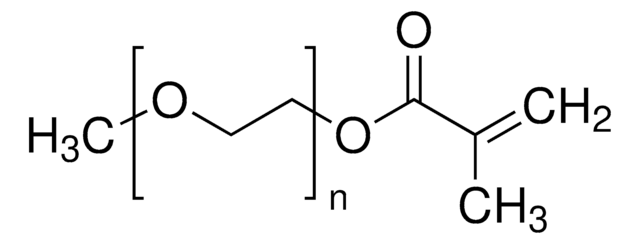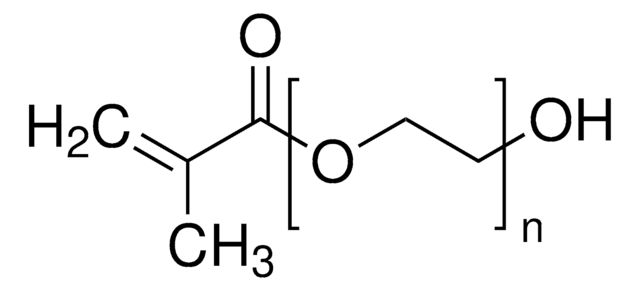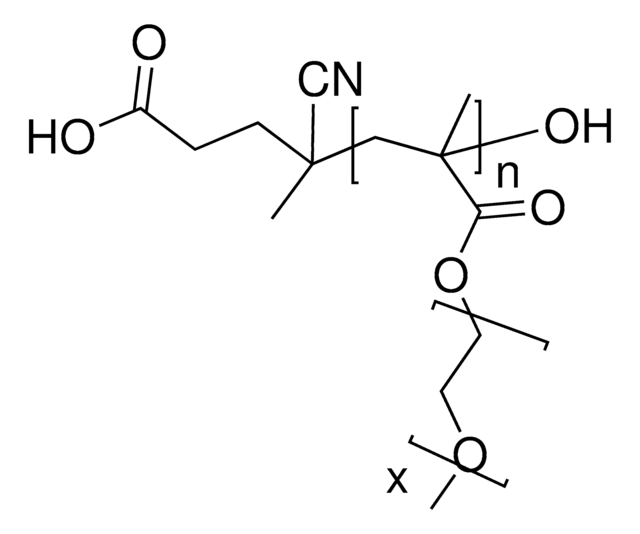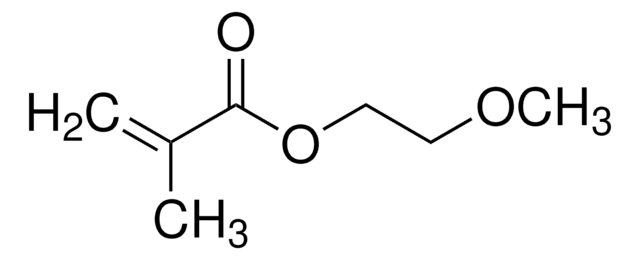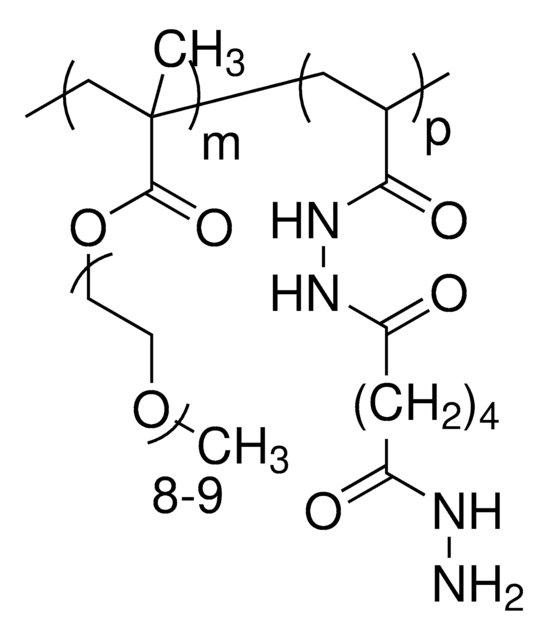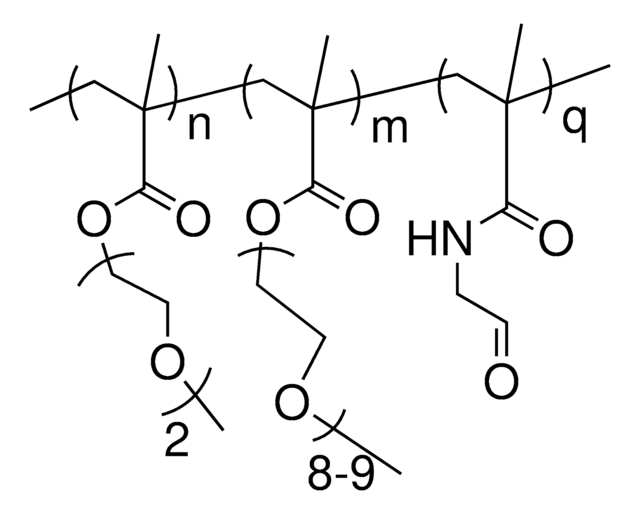447935
Poly(ethylene glycol) methyl ether methacrylate
average Mn 300, methacrylate, methoxy, 300 ppm BHT as inhibitor, 100 ppm MEHQ as inhibitor
Sinónimos:
Polyethylene glycol, Methoxy PEG methacrylate, Methoxy poly(ethylene glycol) monomethacrylate, Poly(ethylene glycol) monomethyl ether monomethacrylate
About This Item
Productos recomendados
Nombre del producto
Poly(ethylene glycol) methyl ether methacrylate, average Mn 300, contains 300 ppm BHT as inhibitor, 100 ppm MEHQ as inhibitor
mol peso
average Mn 300
Nivel de calidad
contiene
100 ppm MEHQ as inhibitor
300 ppm BHT as inhibitor
idoneidad de la reacción
reagent type: chemical modification reagent
reaction type: Polymerization Reactions
índice de refracción
n20/D 1.452
densidad
1.05 g/mL at 25 °C
Ω-final
methacrylate
α-final
methoxy
arquitectura del polímero
shape: linear
functionality: monofunctional
temp. de almacenamiento
2-8°C
cadena SMILES
O(CCOCCOC)CCOCCOC(=O)C(=C)C
InChI
1S/C13H24O6/c1-12(2)13(14)19-11-10-18-9-8-17-7-6-16-5-4-15-3/h1,4-11H2,2-3H3
Clave InChI
KRCGBOKYIUDIFY-UHFFFAOYSA-N
¿Está buscando productos similares? Visita Guía de comparación de productos
Categorías relacionadas
Descripción general
Aplicación
Palabra de señalización
Warning
Frases de peligro
Consejos de prudencia
Clasificaciones de peligro
Eye Irrit. 2 - Skin Irrit. 2 - Skin Sens. 1 - STOT SE 3
Órganos de actuación
Respiratory system
Código de clase de almacenamiento
10 - Combustible liquids
Clase de riesgo para el agua (WGK)
WGK 1
Punto de inflamabilidad (°F)
Not applicable
Punto de inflamabilidad (°C)
Not applicable
Equipo de protección personal
dust mask type N95 (US), Eyeshields, Faceshields, Gloves
Elija entre una de las versiones más recientes:
¿Ya tiene este producto?
Encuentre la documentación para los productos que ha comprado recientemente en la Biblioteca de documentos.
Los clientes también vieron
Artículos
The manufacture of monomers for use in ophthalmic applications is driven by the need for higher purity, improved reliability of manufacturing supply, but ultimately by the need for the increased comfort, convenience, and safety of contact lens wearers. Daily wear contact lenses have the potential to fill this need for many customers; however, their widespread use is constrained by higher costs compared to weekly- or monthly-based lenses. New approaches that improve cost structure and result in higher quality raw materials are needed to help make contact lenses more affordable and accelerate growth of the contact lens market.
Devising biomaterial scaffolds that are capable of recapitulating critical aspects of the complex extracellular nature of living tissues in a threedimensional (3D) fashion is a challenging requirement in the field of tissue engineering and regenerative medicine.
Global Trade Item Number
| Número de referencia del producto (SKU) | GTIN |
|---|---|
| 447935-500ML | 4061835571611 |
| 447935-100ML | 4061835571604 |
Nuestro equipo de científicos tiene experiencia en todas las áreas de investigación: Ciencias de la vida, Ciencia de los materiales, Síntesis química, Cromatografía, Analítica y muchas otras.
Póngase en contacto con el Servicio técnico